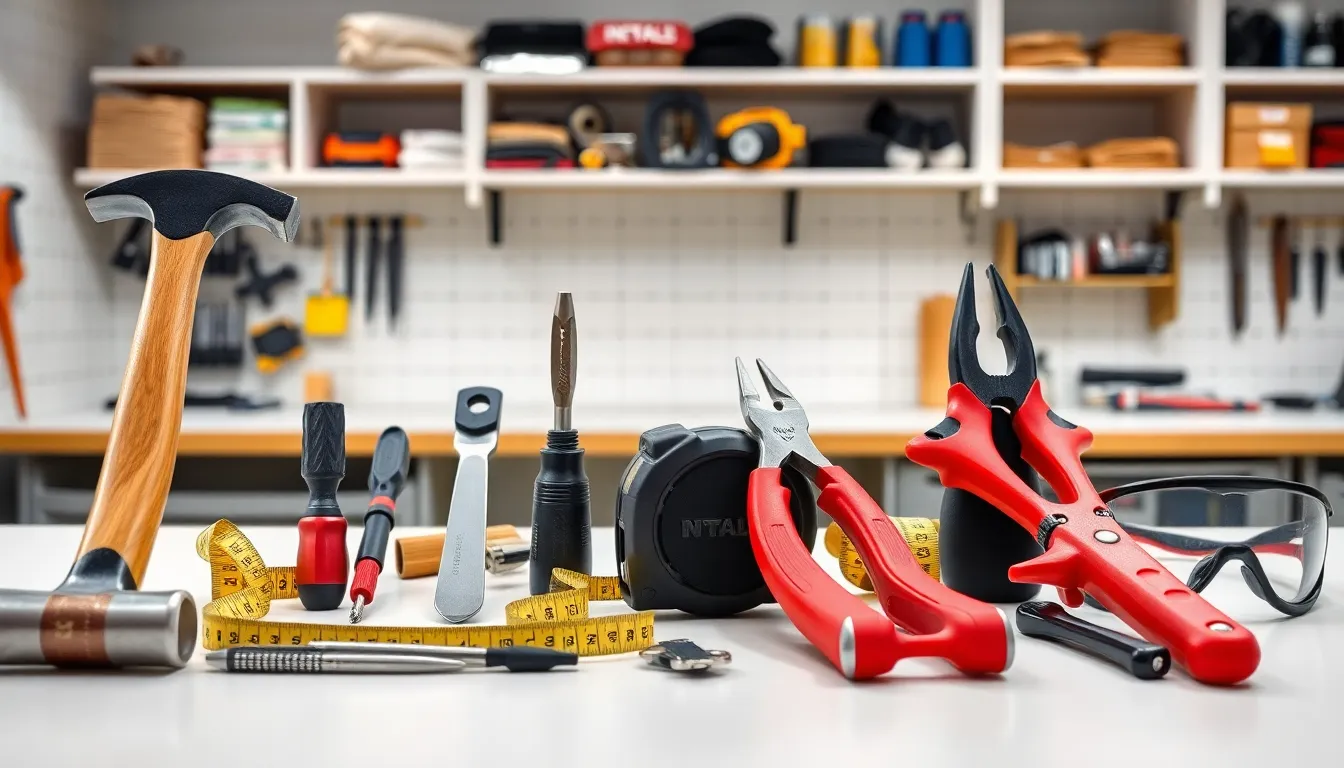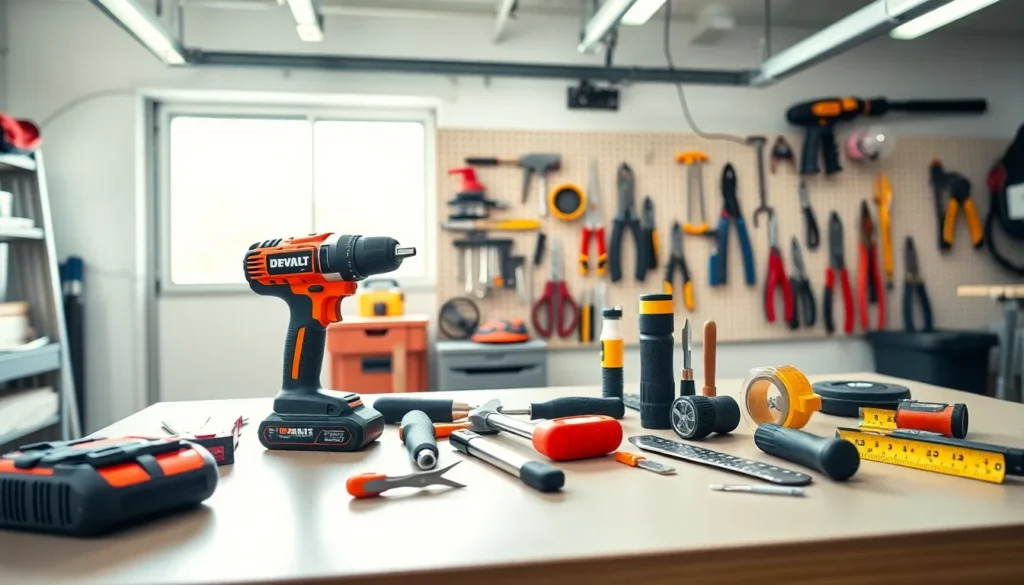Table of Contents
ToggleHome improvement is like that awkward dance, you either have the right moves or end up stepping on a few toes (or worse, your own.). Whether you’re finally tackling those cabinets that have haunted your kitchen for years or building that dream outdoor deck, having the right tools can make all the difference. In this guide, we’ll unravel the must-have home improvement tools to elevate your DIY game, ensuring your projects go from “oops” to “wow.” Let’s immerse and discover what every homeowner should keep in their toolkit.
Essential Hand Tools for Home Improvement

To kick things off, let’s talk about hand tools. These are your trusty companions, the unsung heroes of home improvement. First up, the hammer, a classic tool that every homeowner needs. It’s perfect for hanging pictures and, let’s be honest, relieving a little stress after a long day.
Next, you can’t go wrong with a screwdriver set. This should include both Phillips and flathead styles. They’re essential for assembling furniture or tightening those pesky screws that just won’t cooperate.
And let’s not forget about the measuring tape. Precision is key in home improvement. After all, no one wants a crooked shelf. A good 25-foot tape measure will cover most projects.
You might also want a utility knife on hand for cutting through a variety of materials, from cardboard to drywall. Don’t overlook a set of pliers either. They can grip, twist, cut, and often save you from a sticky situation. Finally, include a pair of safety goggles for that extra protection while wielding these tools. Every skilled DIY-er knows that safety comes first.
Power Tools Every Homeowner Should Have
Now, let’s amp up the excitement with power tools. These tools can transform tedious tasks into effortless ones. Think of them as the rockstars of your toolkit. First on the list should be a cordless drill/driver. This tool is invaluable for drilling holes or screwing in fasteners. With the right bits, it can do anything.
Another must-have is a circular saw. This tool helps with cutting lumber or plywood, making it a go-to for larger projects. Just remember to hold on tight.
A jigsaw is also a fantastic addition. It can make intricate cuts, especially when dealing with curves or corners. For those who love working with thicker materials, a mitre saw is essential, especially for precise cuts on crown molding.
Last but certainly not least, consider a sander. Whether it’s for furniture refinishing or preparing surfaces for painting, a good sander can save hours of elbow grease.
Specialized Tools for Specific Tasks
While hand and power tools are vital, sometimes specialized tasks require special tools. Enter the world of specialized home improvement tools. If you’re planning on tiling your bathroom, a tile cutter may come in handy. It allows you to make precise cuts to fit the tiles perfectly.
For those ambitious enough to take on plumbing projects, having a pipe wrench or a plumber’s snake can make significant differences. They’re designed to tackle any plumbing issues that may arise.
Maybe someone’s feeling crafty with woodwork? A router is a must for shaping edges and creating decorative patterns. And for home painting projects, a paint sprayer saves time (and sanity) compared to traditional brushing.
Last but not least, consider a stud finder. This handy device helps locate studs behind your walls, so you know exactly where to drill without risking damaging anything behind the scenes.
Safety Equipment for Home Improvement Projects
Before diving into any home improvement adventure, safety should be your top priority. Start with a pair of sturdy work gloves to protect those hands, nobody wants a splinter or cut when wielding tools.
Also, don’t forget about hearing protection. If using power tools like drills and saws, earplugs or earmuffs help keep your ears safe from potential damage.
Safety goggles come in handy again. They are critical for eye protection against dust and flying debris. A respirator mask is advisable for projects involving painting or chemicals. Breathing in harmful fumes isn’t worth the risk.
Plus to these, having a first aid kit readily available is wise. You never know when mishaps might occur, and it’s best to be prepared.
Choosing the Right Tools for Your Project
Now that the toolkit is filling up, how does one select the right tools for a project? Well, gauging the scope of your project is crucial. Larger renovations might demand heavy-duty tools, while minor repairs can often get by with basic hand tools.
Next, consider the materials involved. Different materials require different tools. For instance, working with drywall would necessitate a drywall saw, while wood will call for more carpentry-centric tools.
Another tip is to assess your skill level. Beginners might want to invest in user-friendly tools that aren’t overwhelming. Conversely, seasoned pros may look for advanced features to enhance performance. Often, higher-quality tools last longer, so consider investing in a few high-quality pieces rather than a set of low-quality items.
Finally, think about how often you’ll use the tools. If they will live in your garage mostly, maybe rental options are worth exploring for occasional projects.
Maintenance and Storage of Home Improvement Tools
Taking care of your tools extends their lifespan significantly. After every project, it’s essential to clean them properly. Remove dirt, dust, and sawdust from power tools using compressed air, and wipe down hand tools with a cloth.
Storage is another critical aspect. A toolbox or tool organizer can keep everything tidy and easy to find. For larger tools like drills or saws, consider a dedicated shelf or tool chest. Remember, tools should be stored in a dry place to prevent rust and damage.
Also, regularly check for any loose screws or worn-out parts, especially on power tools, and replace them as necessary. This proactive approach saves hassle down the road.




